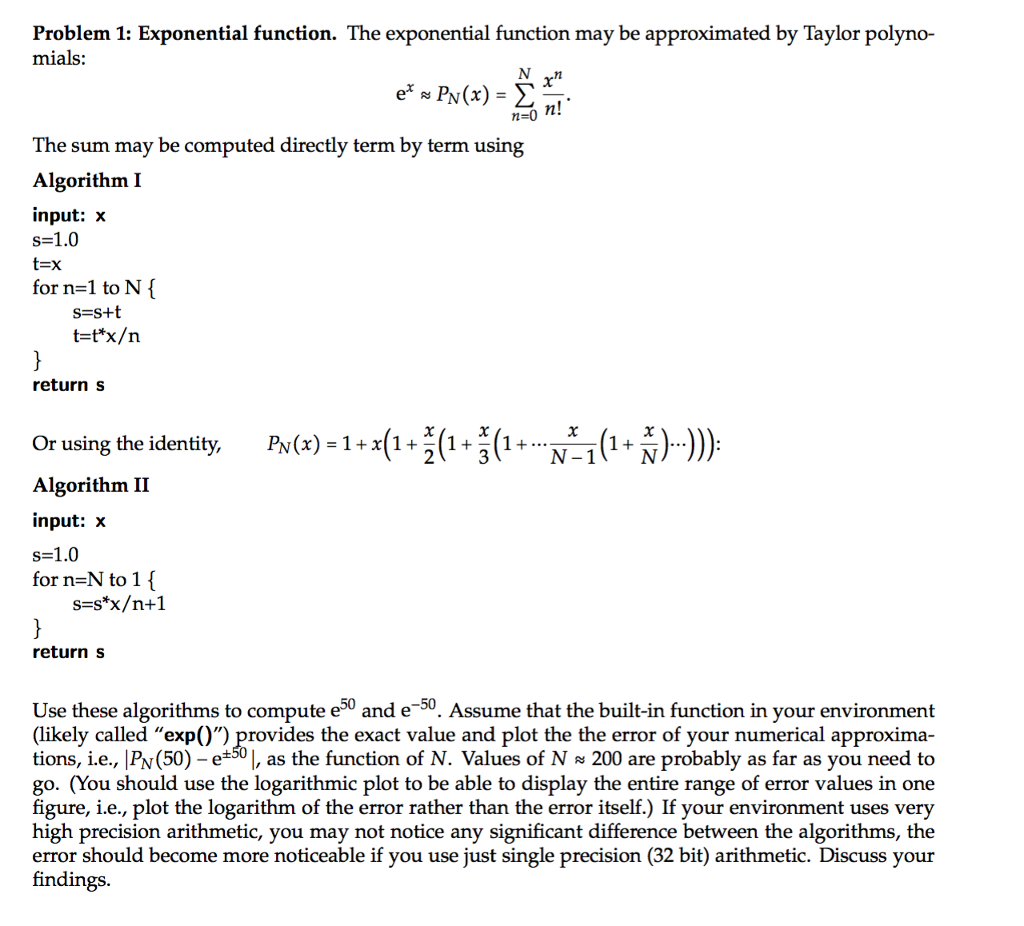Answered step by step
Verified Expert Solution
Question
1 Approved Answer
In Python Exponential function. The exponential function may be approximated by Taylor polynomials e^x almostequalto P_N(x) = sigma^N_n = 0 x^n!. The sum may be
In Python 
Step by Step Solution
There are 3 Steps involved in it
Step: 1

Get Instant Access to Expert-Tailored Solutions
See step-by-step solutions with expert insights and AI powered tools for academic success
Step: 2

Step: 3

Ace Your Homework with AI
Get the answers you need in no time with our AI-driven, step-by-step assistance
Get Started


